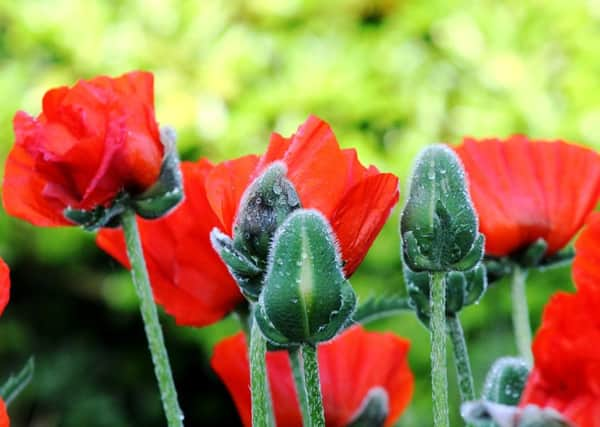Gardening: Poppy days


They are ornamental poppies, those wonderfully over-the-top stars of the early herbaceous border. In June, and into early July, they are the kings (or queens) of the garden with their mountains of ferny foliage topped by those dazzlingly red flowers.
Many gardeners grow them because they are easy to cultivate and constant – every year, they start to push out fresh leaves in spring and then complete the picture with saucer-shaped (and sized) blooms.
Advertisement
Hide AdAdvertisement
Hide AdThe flower stems are strong and tall, up to four feet in height, and each supports a single orange-red flower filled with a black hole packed with purple pollen.
And as fast as the flowers come, they disappear. At best, each lasts a few days; at worst – and when wind and rain enter the frame – perhaps only hours. But an established clump of ornamental poppies can produce dozens of flowers over just a few weeks.
Oriental poppies love the sun and although they will tolerate most conditions, they will not thrive in sodden soils – decent drainage is essential.
As with any other plant, get them off to a good start by incorporating plenty of organic material – well-rotted manure or home-made compost seem to fit the bill.
Advertisement
Hide AdAdvertisement
Hide AdOriental poppies will appreciate a small amount of organic fertiliser, but they don’t want overfeeding, especially with nitrogen-rich fertiliser, because this will produce masses of those elegant leaves but fewer of those fantastic flowers.
And when their work is done, all that’s left is a mass of seed pods filled with enough youngsters to populate a field or more. When the pods are ripe, you can shake them and hear the seeds rattle around inside. Scatter them where you have a mind and hope that in the future, multitudes more plants appear.
If you can’t be bothered facing all that wilting foliage, cut it down to the ground. Next spring, new growth should appear and the cycle will start again.
And if you don’t like red there are hundreds of different oriental poppies in a wide range of eye-catching colours and shapes. Some have single flowers, others double, while the papery petals can be ruffled, crimped or even fringed.